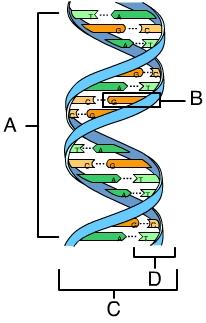
In the accompanying image, a nucleotide is indicated by the letter _____.
B
Which of these is a difference between a DNA and an RNA molecule?
DNA is usually double-stranded, whereas RNA is usually single-stranded.
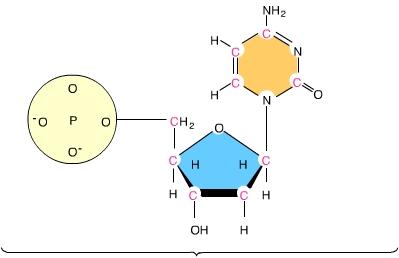
This is an image of a(n) _____.
nucleotide
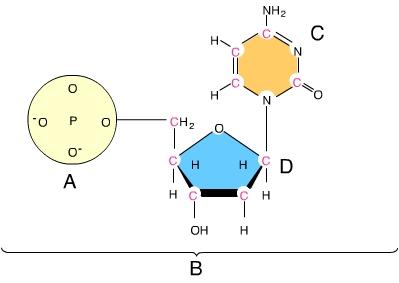
The letter A indicates a _____.
phosphate group
A nitrogenous base is indicated by the letter _____.
C
You can tell that this is an image of a DNA nucleotide and not an RNA nucleotide because you see a _____.
sugar with two, and not three, oxygen atoms
Which of these nitrogenous bases is found in DNA but not in RNA?
thymine
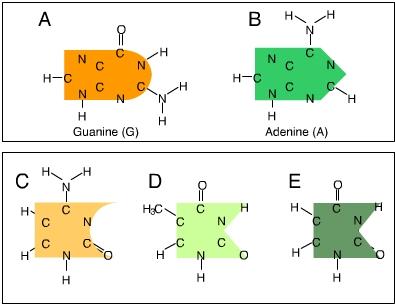
Which of these is(are) pyrimidines?
C, D, and E
Pyrimidines are single-ring structures.
In a nucleotide, the nitrogenous base is attached to the sugar's _____ carbon and the phosphate group is attached to the sugar's _____ carbon.
1' ... 5'
Nucleic acids are assembled in the _____ direction.
5' to 3'
In a DNA double helix an adenine of one strand always pairs with a(n) _____ of the complementary strand, and a guanine of one strand always pairs with a(n) _____ of the complementary strand.
thymine ... cytosine
Griffith's experiments with S. pneumoniae were significant because they showed that traits could be transferred from one organism to another. What else did he find that was significant?
The transferred traits were heritable.
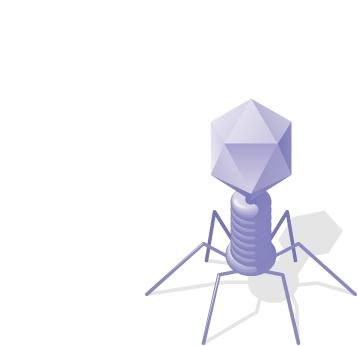
This is an image of a _____.
phage
This is a T2 phage, a type of phage that infects E. coli.
Who demonstrated that DNA is the genetic material of the T2 phage?
Hershey and Chase
The radioactive isotope 32P labels the T2 phage's _____.
DNA
Hershey and Chase used _____ to radioactively label the T2 phage's proteins.
35S
After allowing phages grown with bacteria in a medium that contained 32P and 35S, Hershey and Chase used a centrifuge to separate the phage ghosts from the infected cell. They then examined the infected cells and found that they contained _____, which demonstrated that _____ is the phage's genetic material.
labeled DNA ... DNA
In the Hershey and Chase experiment that helped confirm that DNA, not protein, was the hereditary material, what was the key finding?
Radioactively labeled phosphorus was present inside the infected bacteria.
Who conducted the X-ray diffraction studies that were key to the discovery of the structure of DNA?
Franklin
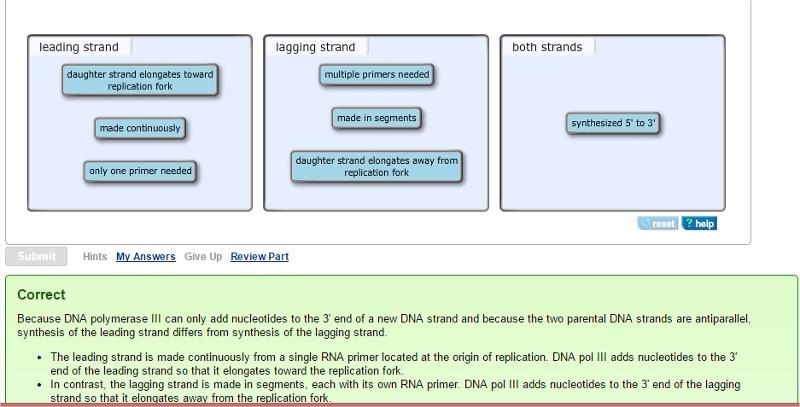
AISHA DO ITEMS 8
AISHA DO ITEMS 8
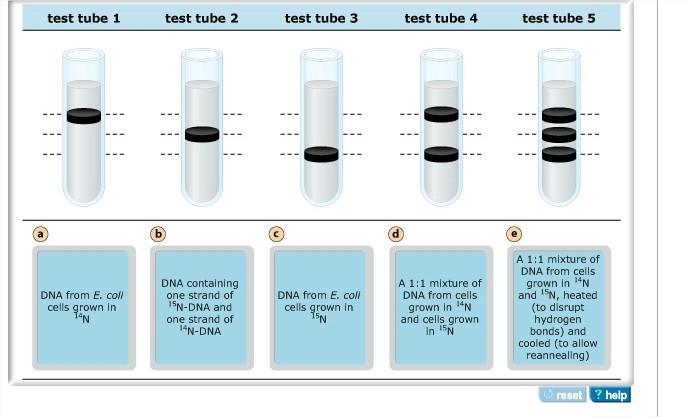
AISHA DO ITEMS 8
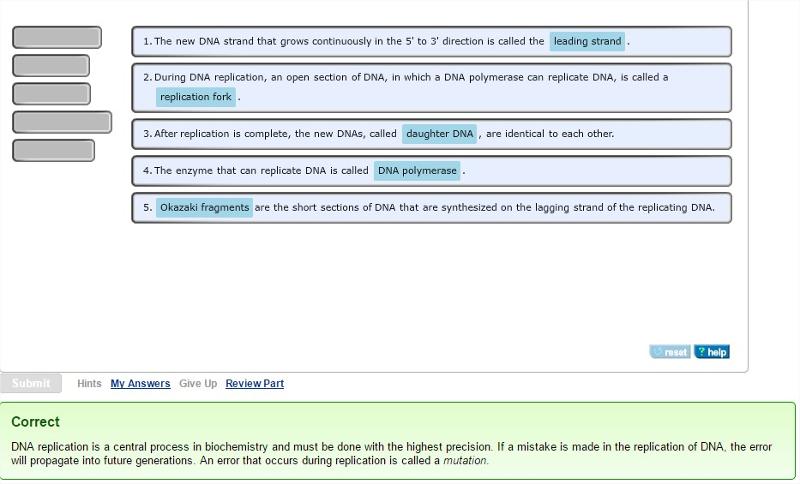
AISHA DO ITEMS 8
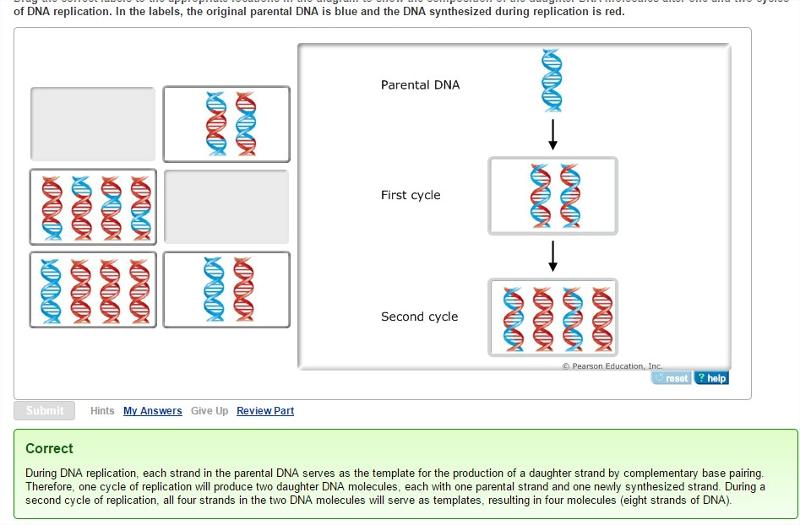
AISHA DO ITEMS 8
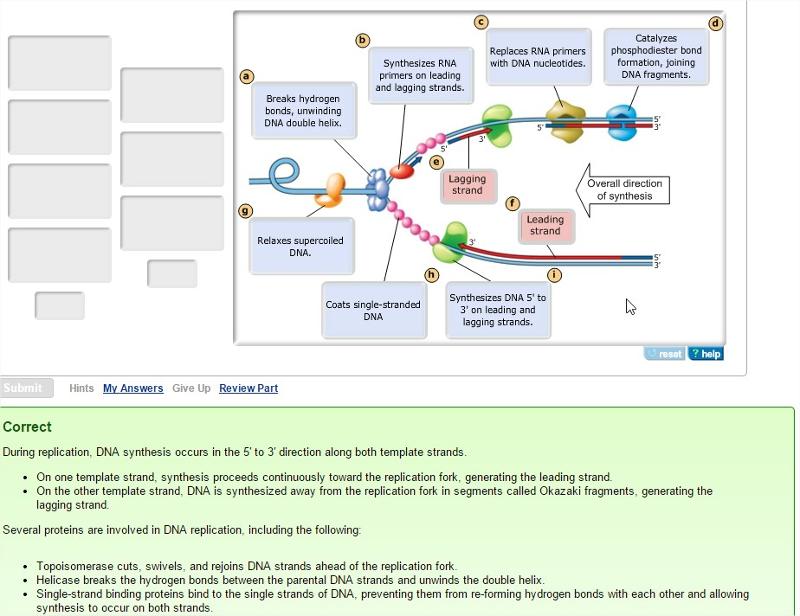
AISHA DO ITEM 9
ITEM 9
item 10
item 10
part B item 1
part b item 1
part b item 2
item 2
After DNA replication is completed, _____.
each new DNA double helix consists of one old DNA strand and one new DNA strand
The first step in the replication of DNA is catalyzed by _____.
helicase
The action of helicase creates _____.
replication forks and replication bubbles
Why is the new DNA strand complementary to the 3' to 5' strands assembled in short segments?
DNA polymerase can assemble DNA only in the 5' to 3' direction
The synthesis of a new strand begins with the synthesis of a(n) _____.
RNA primer complementary to a preexisting DNA strand
An old DNA strand is used as a _____ for the assembly of a new DNA strand.
template
Short segments of newly synthesized DNA are joined into a continuous strand by _____.
Ligase
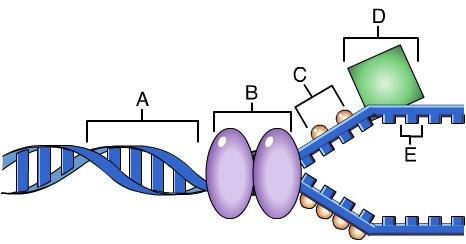
Which of these is responsible for catalyzing the formation of an RNA primer?
D
Why is the new DNA strand complementary to the 5' to 3' strands assembled in short segments?
DNA polymerase can assemble DNA only in the 5' to 3' direction
What catalyzes DNA synthesis?
DNA polymerase
Which of the following statements about DNA synthesis is true?
Primers are short sequences that allow the initiation of DNA synthesis.
Which part of a deoxynucleoside triphosphate (dNTP) molecule provides the energy for DNA synthesis?
Phosphate groups
Which of the following enzymes creates a primer for DNA polymerase?
Primase
Which of the following statements about Okazaki fragments in E. coli is true?
They are formed on the lagging strand of DNA.
Which of the following enzymes is important for relieving the tension in a helix as it unwinds during DNA synthesis?
Topoisomerase
True or false? Single-stranded DNA molecules are said to be antiparallel when they are lined up next to each other but oriented in opposite directions.
True
DNA replication is said to be semiconservative. What does this mean?
Each new double helix consists of one old and one new strand.
What is the function of helicase in DNA replication?
It untwists the double helix and separates the two DNA strands.
What process repairs damage to a preexisting double helix?
nucleotide excision repair
In nucleotide excision repair, damaged DNA is excised by what enzyme(s)?
nuclease
What are the repetitive DNA sequences present at the ends of eukaryotic chromosomes called?
telomeres
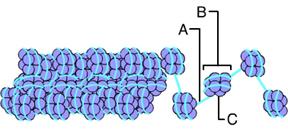
The letter A indicates _____.
DNA double helix
Where would RNA polymerase attach?
A
The letter C indicates _____.
Histones

What is this an image of?
supercoils

What is this an image of?
loops
Which of the following is true of DNA during interphase?
It exists as chromatin and is less condensed than mitotic chromosomes.
What are chromosomes made of?
DNA and proteins
Research indicates that the best estimate of your age is from ______.
markers in your cells
The cells examined from the 2,400 people in this study were from
blood
Which of the following damages cells and causes cell aging?
inflammation
The researchers used strands of DNA located at the ends of chromosomes (called telomeres) to classify the cells they studied. What assumption did they make about telomeres?
Longer telomeres indicate younger cells.
The researchers found that telomeres were ______.
longer in individuals who exercised regularly
The research showed that individuals who _______ had younger looking cells based on telomere measurements.
exercised for an average of 30 minutes per day
In his work with pneumonia-causing bacteria and mice, Griffith found that
some substance from pathogenic cells was transferred to nonpathogenic cells, making them pathogenic.
What is the basis for the difference in how the leading and lagging strands of DNA molecules are synthesized?
DNA polymerase can join new nucleotides only to the 3' end of a growing strand.
In analyzing the number of different bases in a DNA sample, which result would be consistent with the base-pairing rules?
A + G = C + T
The elongation of the leading strand during DNA synthesis
depends on the action of DNA polymerase.
In a nucleosome, the DNA is wrapped around
histones
E. coli cells grown on 15N^{15}{\rm N} medium are transferred to 14N^{14}{\rm N} medium and allowed to grow for two more generations (two rounds of DNA replication). DNA extracted from these cells is centrifuged. What density distribution of DNA would you expect in this experiment?
one low-density and one intermediate-density band
A biochemist isolates, purifies, and combines in a test tube a variety of molecules needed for DNA replication. When she adds some DNA to the mixture, replication occurs, but each DNA molecule consists of a normal strand paired with numerous segments of DNA a few hundred nucleotides long. What has she probably left out of the mixture?
DNA Ligase
The spontaneous loss of amino groups from adenine in DNA results in hypoxanthine, an uncommon base, opposite thymine. What combination of proteins could repair such damage?
nuclease, DNA polymerase, DNA ligase
Meselson and Stahl cultured E. coli for several generations in a medium with a heavy isotope of nitrogen, 15N. They transferred the bacteria to a medium with a light isotope of nitrogen, 14 N. After two rounds of DNA replication, half the DNA molecules were light (both strands had 14N) and half were hybrids (15N-14N). What did the researchers conclude from these results?
DNA replication is semiconservative.
DNA is a self-replicating molecule. What accounts for this important property of DNA?
The nitrogenous bases of the double helix are paired in specific combinations: A with T and G with C.
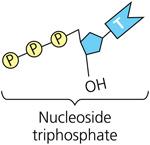
Nucleotides are added to a growing DNA strand as nucleoside triphosphates. What is the significance of this fact?
Hydrolysis of the two phosphate groups (P-Pi) and DNA polymerization are a coupled exergonic reaction.
During DNA replication, the leading strand is synthesized continuously, whereas the lagging strand is synthesized as Okazaki fragments. Why is this so?
DNA synthesis can take place only in the 5' to 3' direction.
Select the most accurate statement describing DNA replication complexes.
DNA replication complexes are grouped into factories, which are anchored to the nuclear matrix.